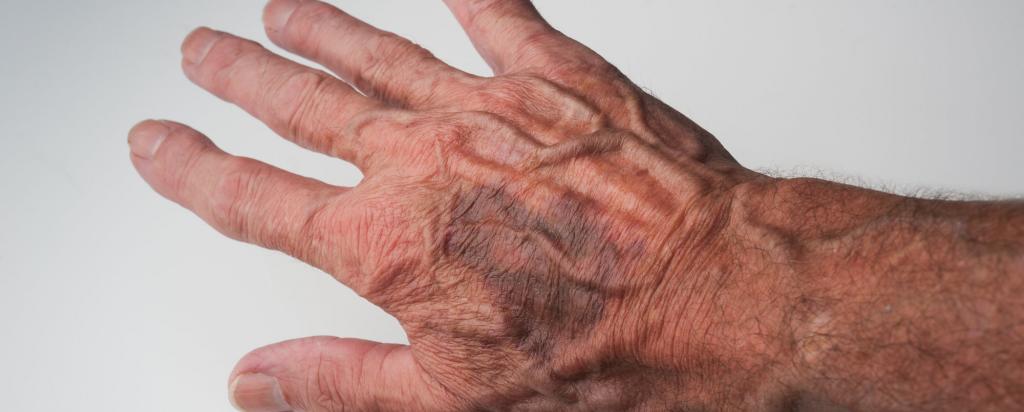
Identification and analysis of components in bruises
There is a need to be able to work out the age of bruising for forensic purposes. This study looks at using/optimising analytical techniques for a novel way of using synchrotron spectral identification of blood and its various breakdown derivatives, individually and as mixtures, that contribute to the colour and spectrum of a bruise.
Our research
As blood breaks down in the skin tissue, the colour of a bruise changes with time. As such, it may be used to find out information about the age of the bruise and hence a timeframe of when the incident that caused the mark took place. With this, a bruise may be significant evidence for forensic investigation such as that performed post mortem (autopsy) to link an assault to an injury, provided they both occurred at the same time. It can also be used in cases where abuse may be suspected and the victims are not able to communicate when an injury happened.
Current methods of establishing the age of a bruise may be invasive and the information presented in the breakdown process may be misleading.
Using infrared analyses at Flinders University and the THz beamline, analysis of samples in solid and liquid phase at various concentrations presented distinguishable spectra of biliverdin and bilirubin – the components that provide the green and yellow components of a bruise respectively.
Different vibrations presented, some attributed to the presence or lack of intramolecular hydrogen bonding in bilirubin, and may be fundamental information for identification of early to late stages of bruise breakdown, hence establishment of age. M
easurements require further research and development as little to no characteristic vibrations are detected when samples are analysed in dilute liquid phase, possibly due to fundamentally different interactions in liquid phase as compared to solid state.
The impact
The research showed how synchrotron methods could help with development of spectroscopic identification and analysis of haemoglobin components in bruises.
This work has the potential to contribute to the greater understanding of the behaviour of chemical components that may be found in and contribute to the apparent colour of a bruise, ultimately assisting in determination of the process of compound breakdown and hence bruise age.